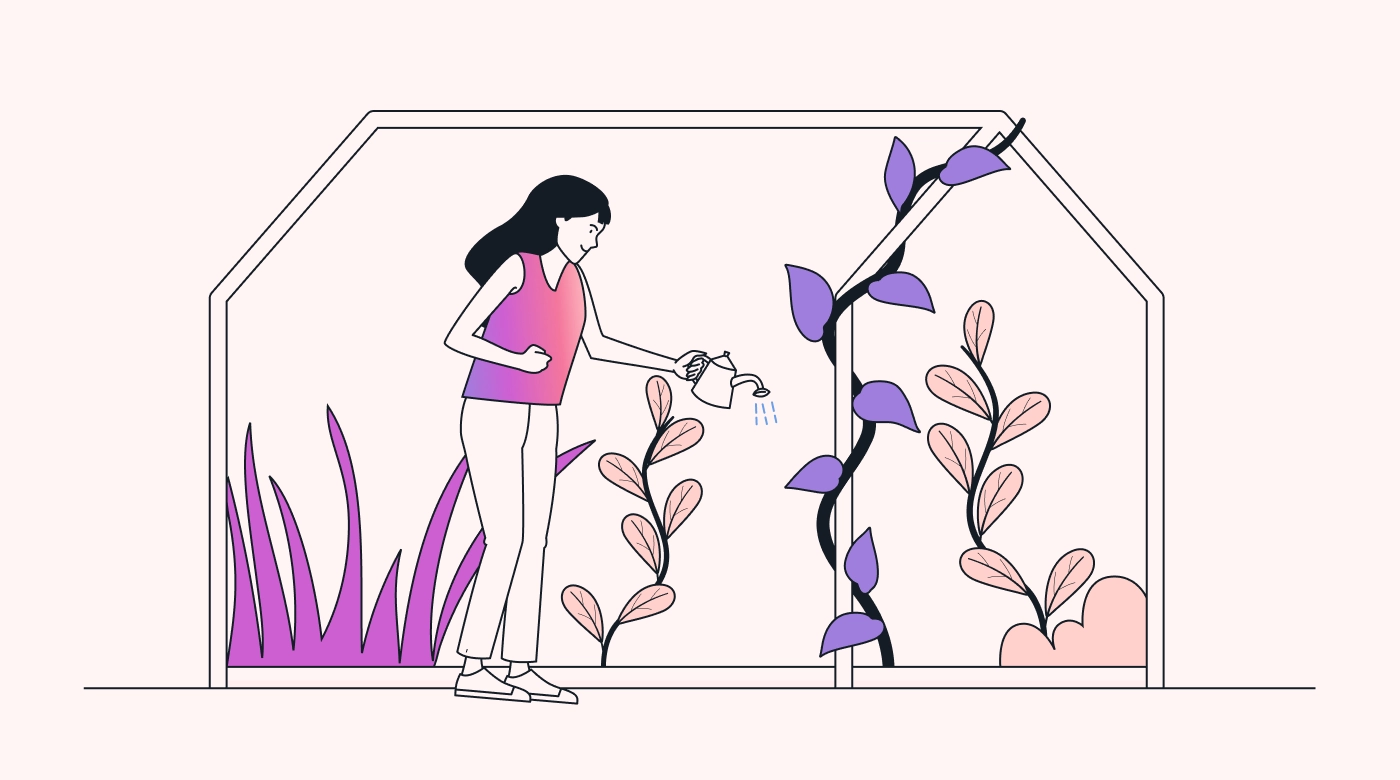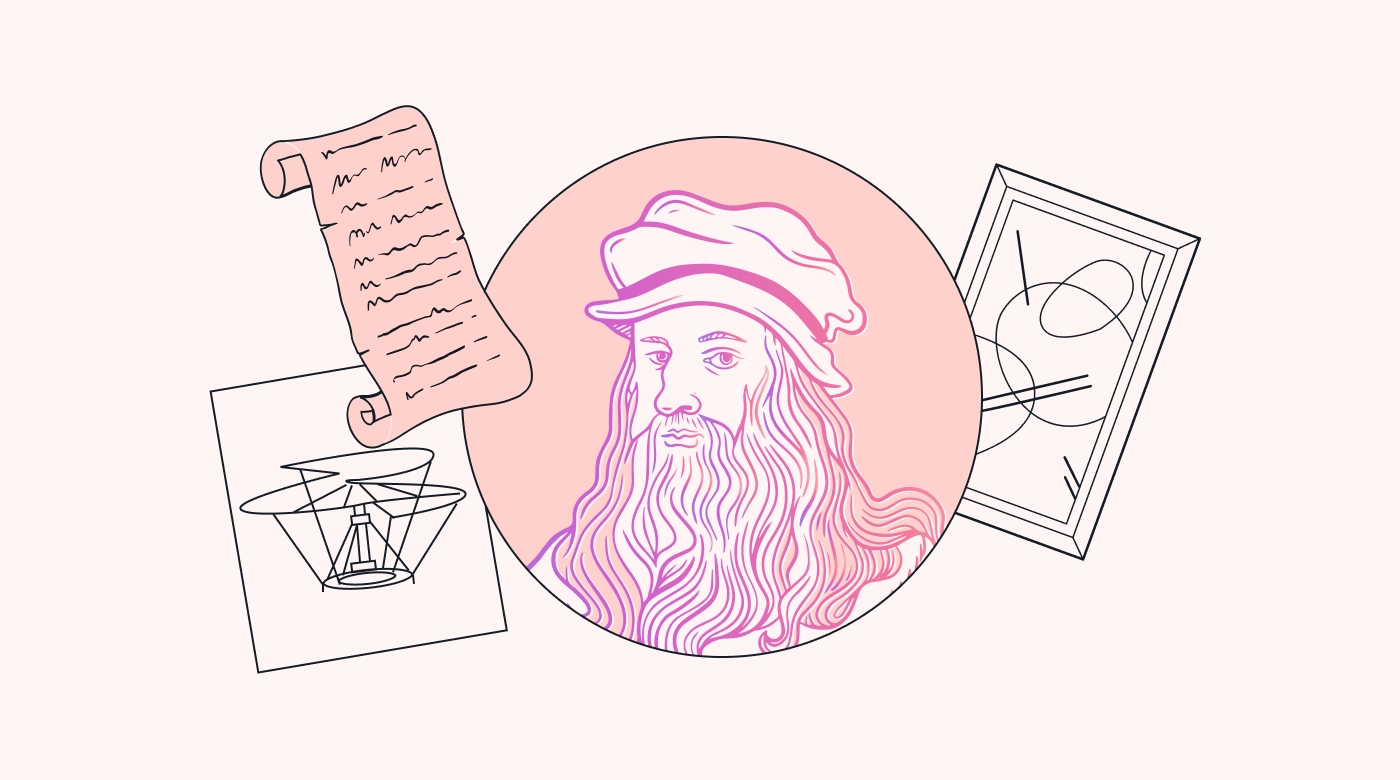Search the internet for “daily habit,” and you’ll find a plethora of suggestions for how to make the most of every day.
But what are those suggestions and tips based on? Are they truly practical and helpful, or will they just clog up your day with meaningless activities that you’ll soon drop again? And will they actually be useful for you in today’s day and age, when technology dominates our lives?
This article takes a deep dive into the history of daily habits to help answer these questions. We’ll explore what kinds of habits were useful and productive in past centuries — and how, in our modern tech age, we can use these timeless principles to improve our success and overall well-being.
What is a daily habit?
A daily habit is a regular practice or consistent routine performed every day. It’s a typically small, structured action that we integrate into everyday life to the point that it becomes a routine part of our day.
We invest time and energy into building good habits to achieve long-term goals, become more productive, and maintain our health and well-being. We also embrace daily habits because they provide a framework for stability and efficiency.
Here’s how:
By consistently following a set of routines, you automate a portion of your daily decision-making tasks and challenges. This automation reduces the mental stress associated with planning each day from scratch. This frees up your cognitive energy for more complex daily tasks, which, in turn, can lead to more efficiency and productivity.
Daily habits also help us develop more discipline and better time management. Plus, habits such as regular exercise, adequate rest, and balanced nutrition can have a significant positive impact on our physical and mental health.
In short, daily habits are like a trellis for personal growth and success.
 |
Historical daily habits for better well-being and success
The daily routines of successful individuals and societies throughout history often had commonalities, such as structured work hours, deep focus, and balanced leisure activities.
Here are a few snapshots of daily habits from three very different eras:
Ancient Rome
Many Roman citizens started their days early with salutatio matutina, a morning greeting session that was important for networking and political success. This was followed by focused work sessions in business enterprises, legal courts, senate debates, or estate management.
The afternoons were often reserved for physical exercises in gymnasiums or public baths, which shows the value these successful citizens of 2,000 years ago placed on maintaining physical health alongside their professional duties.
The Renaissance
The Renaissance was a time of revival and accomplishment in many fields, including art, science, and architecture.
One of the pathways to success was having a well-structured yet diverse day. Leonardo da Vinci, for instance, tackled a number of different disciplines in the course of one day — a powerful way to keep his mind fresh and engaged.
 |
Da Vinci often spent his mornings in artistic creation or performing scientific experiments. The afternoons were then dedicated to teaching pupils and learning from fellow masters. And he used his evenings for deep philosophical discussions at intellectual salons.
This routine matched the Renaissance ideal of the polymath (someone well-versed in different academic and professional fields). It suggests that a broad intellectual diet contributes to overall success.
The Industrial Revolution
In the 1800s, as society became more mechanized, the working class's workdays became tightly bound to factory schedules — often six days a week.
In this climate, successful entrepreneurs and thinkers like Benjamin Franklin promoted strict time management strategies. Yet, Franklin included a variety of activities in his day that didn’t stifle his mind but instead stimulated it.
Franklin's famous daily routine included getting up early and going to bed early. In between, he made time for reading, personal reflection, and socialization, all scheduled around his professional commitments. This made him a great forerunner of sticking to a healthy work-life balance.
These historical daily routines from three different periods all point to the importance of committing to personal and professional growth, paired with community interaction and a variety of activities for physical and mental well-being. We can use these time-proven disciplines in our own quest for balanced well-being and success.
But first, what exactly are we up against? What makes our daily lives so different from those in the past?
In a word, technology.
How has technology reshaped our daily routines?
Technology has transformed every facet of daily life in the modern era — and often at the cost of personal well-being and productivity.
Let’s get into some specifics:
The all-pervasiveness of smart devices
Smartphones and other smart devices mean that we now carry the office and its many stresses in our pockets. And it’s not only our work that suffers from constant disruptions by notifications but also our downtime.
Simply put, we now live in a culture of always being “on.”
Estimates vary widely, but the average person checks their phone well over 80 times a day, or at least every 12 minutes. This distracting habit disrupts our ability to focus and engage in sustained deep work.
The impact of social media and the internet
The internet and social media have caused a big shift in how we spend our free time. For many people, leisure time now consists of scrolling through endless social media feeds.
This shift, which can lead to mental overload and even digital addiction, has profound implications for people’s mental health. High levels of social media usage are even correlated with increased rates of anxiety and depression.
 |
The rise of multitasking
Modern technology tends to promote a multitasking environment where people feel they have to work on a number of tasks or projects simultaneously in order to keep up. However, neuroscience research indicates that multitasking can reduce productivity by as much as 40%.
For many people, the constant back-and-forth between tasks leads to cognitive overload, coupled with poorer overall performance and higher stress levels.
Remote work and blurred boundaries
Remote work, made possible by advances in communication technologies, gives us more flexibility in how we work. But at the same time, it often blurs the boundaries between work and home life. Not being able to "switch off" our work responsibilities can lead to longer working hours. The result is more encroachment on time that is traditionally reserved for personal life and rest.
An overarching result of this technology takeover is that our lives have become more fragmented. The challenge, then, is to establish new habits that lift us up and over the negative effects of this scatteredness and fragmentation.
Successful habits from the pre-tech past can serve us well in figuring out how to find some much-needed balance.
Lessons from the past: Applying history’s wisdom today
Integrating some of the time-tested historical habits we reviewed into our daily routines can help counteract the stress and disconnection brought on by our tech-saturated environment.
Here are some of the most important lessons from the past that we can apply today:
Structured work hours
We’ve already learned that historical figures like Ben Franklin were advocates for strict scheduling of their day, which maximized productivity while also building in adequate time for rest and personal pursuits.
As modern workers, though, many of us have lots of flexibility. Adopting a more defined schedule with clear start and end times better reflects the structured workdays of the past.
The immediate benefits are a clear distinction between work and free time, more focus during work hours, and deeper relaxation during our “off” hours.
Designated leisure time
In Ancient Rome and during the Renaissance, leisure was seen as a vital component of daily life — essential for balance and creativity.
 |
One way to reintegrate this into our modern routines is to establish tech-free zones and/or periods during the day. These could be dedicated to hobbies, physical activity, or simply digital distraction-free relaxation.
Social and community interaction
Before the age of technology, most social interactions were face-to-face. Community involvement was a key aspect of daily life.
Including more in-person interactions can help combat the feelings of isolation and loneliness that many people — especially those who work remotely — experience.
Physical activity
Historical daily routines often included a fair amount of activity for physical health, mental clarity, and emotional stability. For example, the daily routines of Ancient Greeks included physical training as a fundamental aspect of their philosophy of a sound mind in a sound body.
We can adopt this principle by including regular exercise in our daily routines, even while at work. For instance, we can have walking meetings, incorporate standing desks into our workspaces, or establish morning routines for exercise and getting energized.
Mindful consumption of information
Information was consumed more deliberately in the past than it is now — through books, lengthy articles and papers, and in-depth discussions.
Today, the rapid consumption of bite-sized information online often leads to superficial, unsatisfying understanding.
Deep, focused reading and learning — without technological interruptions — are a good counterbalance to the shallowness we often experience while engaging in social media and news feeds.
Reflection and mindfulness
Many successful historical figures had routines that included periods of reflection or meditation.
Roman emperor Marcus Aurelius, for example, regularly wrote down his personal reflections and meditations about “finding your place in the world.” These writings have been studied for centuries for their wisdom.
Today, we can use similar practices, such as journaling, meditative practices, or simply some quiet contemplation, for mental balance and fulfillment.
 |
Synthesis of the old and the new can bring about a deeper sense of well-being in our tech-driven world.
12 daily habits for well-being and success
Based on the observations above, here, we discuss 12 daily habits designed to help you stay healthy and live a successful life in today's tech-dominated world. Try them all out, or pick and choose what suits you best as building blocks for a more holistic approach to daily living.
1. Hold morning meditation or mindfulness sessions
Start your day with 10 to 15 minutes of meditation or mindfulness to center yourself and set a calm, focused tone for the day.
2. Exercise
Engage in 20 to 30 minutes of physical activity daily. This could be a brisk walk or a mix of cardio, strength training, or flexibility exercises.
3. Structure your work hours
Define clear start and end times for your work day. This mimics the historical “structured work” habit that lends itself to better focus and increased productivity.
4. Have deep work sessions
Allocate specific times for deep work sessions without interruptions. You could use technology like focus apps to block distracting websites and notifications.
5. Take tech-free breaks
Schedule short, regular breaks throughout the day where you don’t touch your digital devices. This will help you mentally recharge and reduce your chances of developing digital fatigue.
6. Eat balanced meals and stay hydrated
Eat balanced meals and drink enough water throughout the day to maintain your energy level.
7. Always be ready to learn
Dedicate some time each day to learn new skills or knowledge to stay innovative and interested in what is happening in the world around you.
8. Schedule your social interactions
For more fulfilling, inspiring personal relationships, set specific times for meaningful face-to-face interactions with colleagues, friends, or family members each day.
9. Get involved in your community
Engage in community service or local events at least once a week for a stronger sense of belonging and purpose outside of your work and home environments.
10. Designate your evenings to unwind
Establish a tech-free zone at home in the evenings, and engage in relaxing activities like reading, crafting, or playing music to help you unwind.
 |
11. Journal
Spend 10 to 15 minutes before bed reflecting on your day. Jot down your realizations, successes, and areas for improvement as ongoing steps in your journey of greater self-awareness and personal growth.
12. Establish a consistent sleep routine
Aim for 7 to 9 hours of quality sleep by sticking to a consistent bedtime. Sleep trackers can come in handy for monitoring and improving your sleep patterns.
Each of these simple yet time-honored daily habits will help make each day more fulfilling. Use them to nurture your mind and body for long-term success and health!
Track your daily habits with Motion
A big part of healthy habit formation is to find an effective way to weave new routines into your tech-heavy modern life.
Though technology often stands in the way of well-being and relaxation, it can also be a great support in tracking the daily habits you commit to.
Motion is designed to help you do just that. Input your daily routines, and the task manager will dynamically adjust your schedule to make sure you can fit in these new commitments at the times that suit you best.
Interested? Try Motion for free for 7 days.

A certified content writer and SEO strategist, Carla Groenewegen writes about success principles and practices aimed at SMBs and not-for-profit organizations.




